Chapter: Biochemistry: Carbohydrate Metabolism
HMP shunt pathway

HMP shunt pathway
Although glycolysis and citric acid cycle are
the common pathways by which animal tissues oxidise glucose to CO2
and H2O with the liberation of energy in the form of ATP, a number
of alternative pathways are also discovered. The most important one is Hexose
Monophosphate Shunt Pathway (HMP shunt). The pathway occurs in the extra
mitochondrial soluble portion of the cells.
Unlike glycolysis and Krebs cycle which are
primarily concerned with the generation of ATP, HMP shunt generates a different
type of metabolic energy - the reducing power. Some of the electrons and
hydrogen atoms of fuel molecules are conserved for biosynthetic purposes rather
than ATP formation. This reducing power of cells is NADPH (reduced nicotinamide
adenine dinucleotide phosphate).
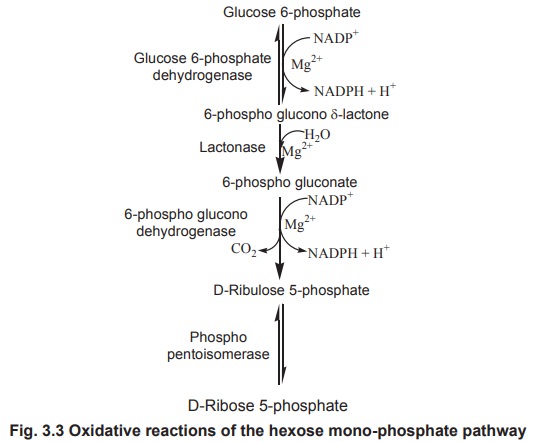
The fundamental difference between NADPH and
NADH (reduced nicotinamide adenine dinucleotide) is that NADH is oxidised by
the respiratory chain to generate ATP whereas NADPH serves as a hydrogen and
electron donor in reductive biosynthesis, for example in the biosynthesis of
fatty acids and steroids.
The first reaction of the pentose phosphate
pathway is the dehydrogenation of glucose 6-phosphate by glucose 6-phosphate
dehydrogenase to form 6-phosphoglucono d-lactone.
Step 1
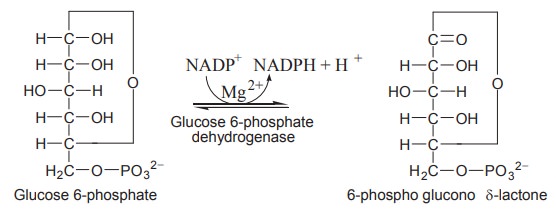
Step 2
The 6-phospho glucono d-lactone is unstable and
the ester spontaneously hydrolyses to 6-phosphogluconate. The enzyme that
catalyses the reaction is lactonase
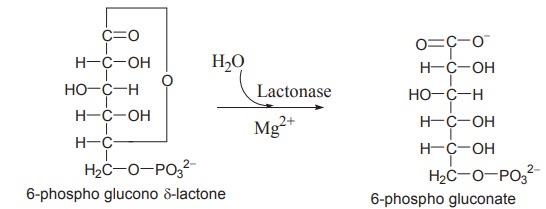
Step 3
6-phospho gluconate further undergoes
dehydrogenation and decarboxylation by 6-phosphogluconate dehydrogenase to form
the ketopentose, D-ribulose 5-phosphate. This reaction generates the second
molecule of NADPH.
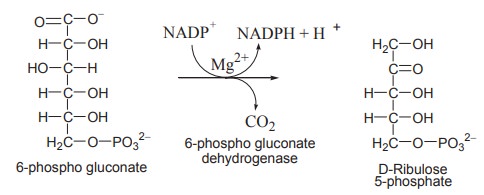
Step 4
The enzyme phosphopentose isomerase converts
ribulose 5-phosphate to its aldose isomer, D-ribose 5-phosphate
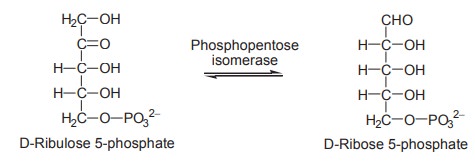
In some tissues, the hexose phosphate pathway
ends at this point, and its overall equation is

The net result is the production of NADPH, a
reductant for biosynthetic reactions, and ribose 5-phosphate, a precursor for
nucleotide synthesis.
Related Topics